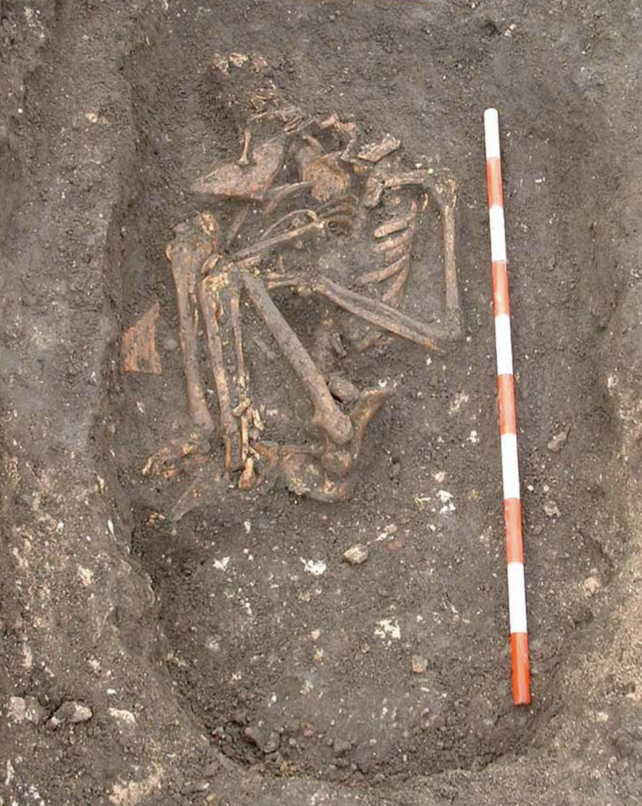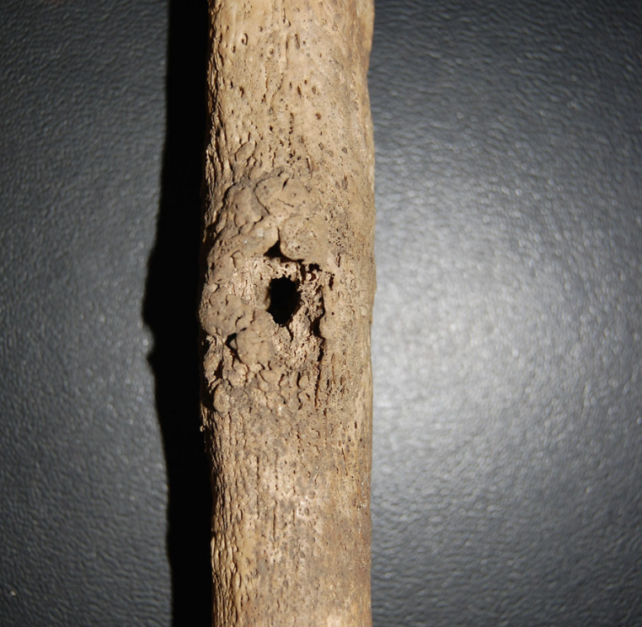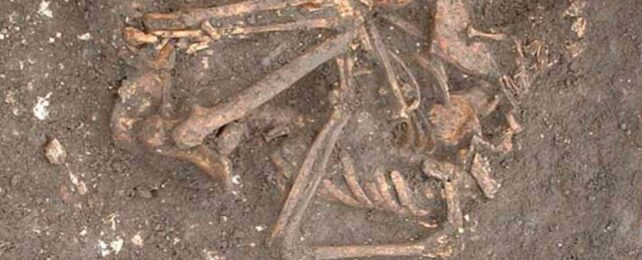In 15th century England, a woman by the name of Lady Isabel German tucked herself away in a room of the All Saints Church near York. For 28 years, she lived in religious solitude as an 'anchoress', praying and contemplating God from the confines of a sealed cell.
Five hundred years later, remains thought to belong to the anchoress have been found in the recesses of the dilapidated church, buried in a curious fashion.
While experts are not absolutely certain that this body belongs to Lady German, the dating of the remains matches closely with historical records.
If archaeologists are right, Lady German's story helps reveal a medieval practice "rarely reflected in the archaeological record."
A life spent between four walls in solitary confinement might sound restrictive from a modern perspective, but many lay women in centuries gone volunteered for a life of isolation to avoid the social and financial dependence that came with marriage, or the lack of rights that came with being an unmarried spinster.
To some, the privacy, excusal from domestic slavery, absolution of sin, and autonomy were all seen as benefits that came with being an anchoress.
"The new study data allows us to explore the possibilities that Lady German chose to devote herself to a life of solitude as a way to remain autonomous and in control of her own destiny," says archaeologist Lauren McIntyre from the University of Sheffield and Oxford Archaeology Limited.
"This chosen lifestyle would also have made her a highly significant figure within the local community, and she would have been viewed almost like a living prophet."

Judging from her skeletal remains, the last years of Lady German's life would have been marked by tragic illness.
The woman appears to have had septic arthritis, or infections of her joints, as well as advanced venereal syphilis, a sexually transmitted bacterial infection that can cause rashes and sores to pockmark the body.
Later on, the infection can even spread to the brain and nervous system, triggering confusion, memory loss, headaches, or reduced vision.
If the disease damages a person's internal organs enough, it can ultimately lead to death.
"This would have meant [Lady German] lived with severe, visible symptoms of infection affecting her entire body, and later on, neurological and mental health decline," says McIntyre.
Today, archaeologists can only speculate as to how Lady German came to contract such a tragic disease. Because syphilis can lie latent for many years, there's a chance the woman was exposed long before she chose her devout pathway.
Perhaps it even played into her decision to become an anchoress.
Severe disease was sometimes a reason for public shunning, admits McIntyre, and yet, at the same time, it could also be viewed positively – a special sign from God that bestows a "martyr-like status" on a person.
One of the most curious parts of the All Saints discovery was how Lady German's body was found.
Her burial near the church's altar suggests she was a woman of high status, but the position of her body was unusual for the time.
Her skeleton was curled up in a fetal position, with her knees to her chest and her arms wrapped around her middle.
It's possible that this is how the woman simply died in her cell. Rigor mortis then kept her mourners from laying her out straight on her back, which was common practice in medieval England.
Alternatively, the fetal position could be due to the woman's arthritis, or the tight burial space in which she was found.
Despite not being contained in a coffin, 75 percent of Lady German's skeleton remained intact upon re-discovery.
The evidence of infection in her bones was extensive, ranging from her chest to her shoulders to her arms, hands, pelvis, legs, and feet.
Lesions were found in the joints of her left and right elbows, knees, and ankles.

Historical documents on the anchoritic lifestyle explain how women like lady German once came to experience their solitary confinement. First, a bishop or priest would take the candidate through a cleansing ceremony that included a confession, mass, and communion.
Next, the woman would be led to an enclosed cell while those around her sang a litany. As she entered her cell alone, she would say her prayers. Then, the bishop or priest present would bless her and seal her cell.
From that moment on, she would never again pass the threshold alive.
The rest of Lady German's life was spent in reflection, penitence, and prayer.
It's unclear how large her cell was, but records from the time suggest anchoress rooms generally ranged from the size of an elevator lift to a small living room 8 meters squared.
An analysis of isotopes in the bones suggest the deceased had regularly dined on fish, which aligns with medieval religious fasting regulations at the time.
Whoever the remains belong to, they are owed a long, peaceful rest after a life of lonely devotion.
The study was published in Medieval Archaeology.
